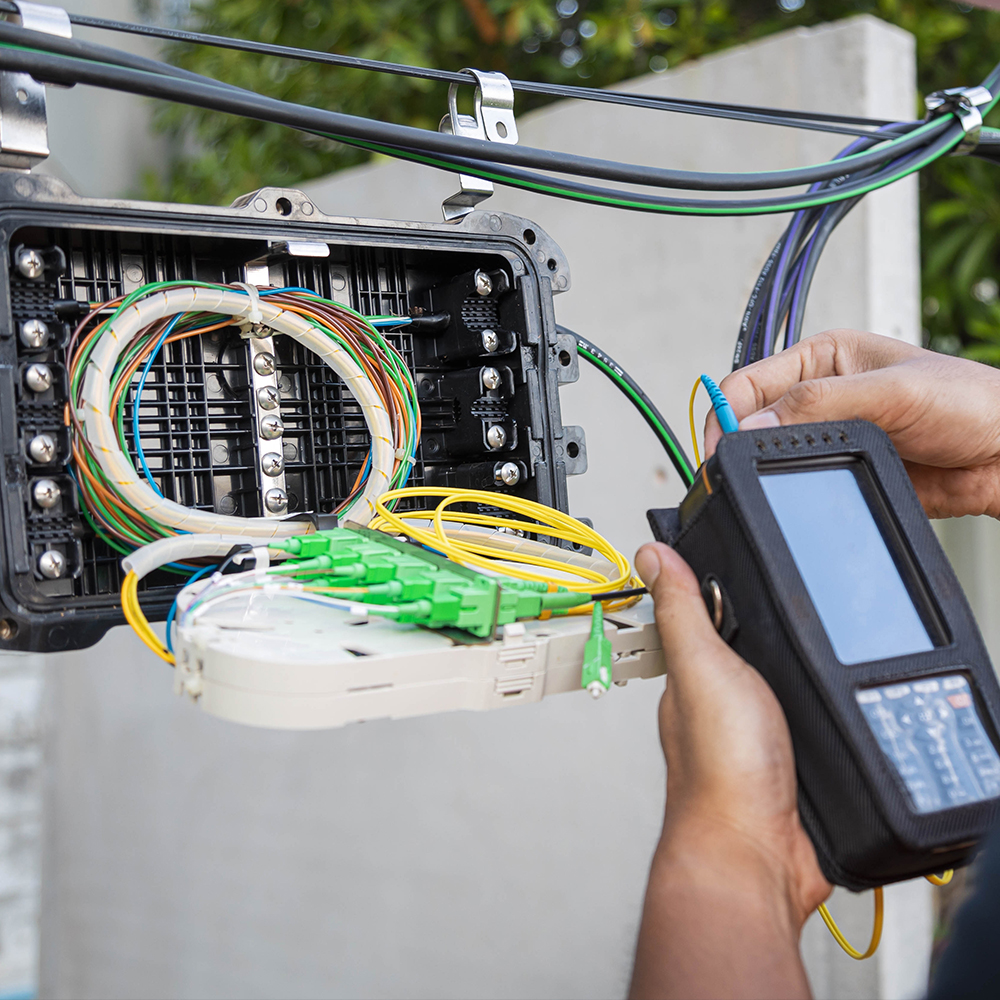Unlock Fast, Secure, and Scalable Connectivity with Fiber Optics
When it comes to high-speed, reliable data transmission, fiber optic cabling is the gold standard. In today’s digital world, businesses need fast and uninterrupted connectivity to stay competitive. Our fiber optic cabling solutions ensure your network is efficient, scalable, and future-proof. Whether you’re upgrading your current infrastructure or installing a new system, we provide customized installations tailored to your business needs.
Our Fiber Optic Cabling Partners
High-Speed Connectivity with Fiber Optic Cabling
Fiber optic cabling is a crucial component for businesses that rely on fast, secure, and reliable data transmission. It offers significant advantages over traditional copper cabling, particularly when it comes to bandwidth, distance, and performance. At Insyte Security, we specialize in the design and installation of fiber optic cabling systems that ensure your business remains connected to the world at lightning speeds. Whether you’re running an office network, data center, or multi-site operation, our team ensures that your network infrastructure is robust and future-proof.
Our fiber optic solutions are built to support high-performance applications such as video conferencing, large data transfers, cloud computing, and internet of things (IoT), all while offering the reliability that keeps your business operations running smoothly.
Why Choose Fiber Optic Cabling for Your Business?
Fiber optic cabling offers unparalleled performance, scalability, and reliability, making it the top choice for businesses looking to future-proof their network infrastructure. Here are the key benefits of choosing fiber optic cabling for your commercial property:
High-Speed Data Transmission
Fiber optics deliver data at the speed of light, providing incredibly fast and efficient communication between devices. Whether your business handles large files, high-definition video, or real-time communication, fiber optic cables ensure smooth and uninterrupted data transfer.
Greater Bandwidth Capacity
Fiber optic cables have significantly higher bandwidth capabilities than traditional copper cables, allowing businesses to support more devices and data-heavy applications. This results in fewer bottlenecks, reduced latency, and an overall faster, more efficient network.
Longer Distance Without Signal Loss
Fiber optic cables maintain signal quality over longer distances than copper cables. For businesses with large campuses or multiple buildings, fiber optics provide consistent connectivity over several kilometers, ensuring that your network remains stable without the need for repeated signal boosters.
Scalability for Future Growth
As your business grows and your networking needs increase, fiber optic cabling can scale easily to meet demand. Its flexibility allows you to upgrade your systems with minimal disruption, making it a future-proof investment that grows with your business.
Enhanced Security
Fiber optic cables are highly secure because they do not emit signals that can be intercepted. This makes them far more secure than traditional copper cables, offering better protection against eavesdropping and unauthorized access to your data.
Reduced Interference
Fiber optic cabling is immune to electromagnetic interference (EMI), which can affect copper wiring. This ensures that your network performance remains stable, even in environments with high electrical interference, such as factories or warehouses.
Use Cases & Scenarios
Fiber optic cabling is versatile and can be used in a variety of industries to support data-intensive applications and communication systems. Here are two scenarios where fiber optic solutions can significantly improve network performance and reliability.

Scenario 1: Multi-Site Corporate Network
A growing company with multiple office locations across the city needs a robust and scalable network to support seamless communication and data transfer between sites. Traditional copper cabling is struggling to meet the demand for high-speed connectivity and frequent data transfers, especially for applications like video conferencing and file sharing.
By switching to fiber optic cabling, the company achieves ultra-fast communication between offices, with bandwidth that easily supports the growing number of devices and users. This high-speed connectivity ensures that the company can handle future growth without experiencing slowdowns or costly infrastructure upgrades.
Scenario 2: Data Center Connectivity
A data center housing multiple clients and cloud applications needs to support high-volume data traffic with minimal latency. Copper cables are proving insufficient for the high-bandwidth demands of the data center. The business requires a reliable and future-proof cabling solution to ensure smooth, continuous data flow for mission-critical applications.
The installation of fiber optic cabling within the data center allows for faster data processing, greater bandwidth capacity, and the ability to support larger workloads. This ensures that clients’ data remains secure and accessible, even during periods of heavy traffic, while future-proofing the data center’s infrastructure for new technology and expansion.

The Technology Behind Fiber Optic Cabling
Fiber optic cabling relies on light signals to transmit data, offering several technological advantages over traditional copper cables.
Fiber optic technology ensures that your network remains fast, secure, and scalable, supporting the most data-intensive applications today and in the future. Here’s how it works:

Light-Based Transmission
Fiber optic cables use light signals transmitted through glass or plastic fibers to deliver data, as opposed to electrical signals used in copper cables. This allows for faster data transmission over longer distances without signal degradation.

Single-Mode vs. Multi-Mode Fiber
There are two primary types of fiber optic cables: single-mode and multi-mode. Single-mode cables are designed for long-distance transmission and are typically used in backbone connections, while multi-mode cables are ideal for shorter distances within buildings or between adjacent buildings.

Active and Passive Components
Fiber optic systems include active components like transmitters and receivers, and passive components such as splitters, couplers, and optical amplifiers, which help distribute and enhance the signal across the network.

Minimal Signal Loss
Because fiber optics use light to transmit data, they experience much lower signal loss than copper cables. This makes fiber optics the ideal choice for high-speed, high-volume data traffic across long distances.
Get the Fast, Secure Fiber Optic Network Your Business Needs
Is your business ready for the future of high-speed connectivity? Fiber optic cabling provides the performance, security, and scalability that your company needs to stay ahead. Our experts can help you design and install a fiber optic solution that fits your exact requirements and ensures your network is optimized for the future.
Contact us today for a free consultation and let’s discuss how fiber optic cabling can transform your business infrastructure.


